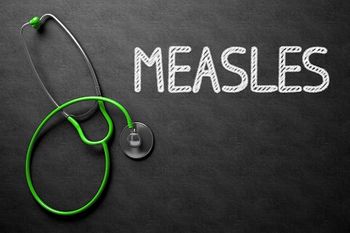
- Contagion, October 2021 (Vol. 06, No. 5)
- Volume 6
- Issue 5
Influenza Virus Is Primed for Continual Emergence and Pandemic Potential
The broad host range and natural reassortment of the influenza virus has played an instrumental role in previous pandemics, and the virus is poised for future large-scale outbreaks.
The ability of any infectious agent to maintain constant transmission enables it to be an ongoing threat to public health. These agents include organisms from viruses to helminths. Transmission ability can be enhanced by an agent’s ability to infect and transmit in a broad range of hosts. However, few pathogens have achieved greater success at ongoing transmission potential than the influenza virus.
The influenza virus causes an acute infection of the respiratory tract. The duration of the virus replication in a human host is usually limited to 7 to 21 days after symptom onset, with peak virus shedding occurring within the first 10 days.1 The typical seasonal influenza virus has a basic reproductive number (R0) usually ranging from 1.0 to 1.5. Pandemic influenza such as the 1918 and 2009 strains might have had a slightly higher reproduction rate of 1.3 to 2.7.2-4.
The world has received a crash course in respiratory infectious diseases in the past 20 months. The emergence of
Globally, influenza accounts for tens of millions of infections and hundreds of thousands of deaths annually, particularly in the young, elderly, and immunocompromised/ immunosuppressed populations. Influenza virus is a frequent cause of pneumonia in individuals with AIDS and is one of the leading causes of AIDS-related deaths each year.7 Multiple pandemic-scale events involving influenza have occurred since the beginning of the 20th century, most notably the 1918 and 2009 H1N1 pandemics. The infamous 1918 influenza pandemic is estimated to have infected more than 33% of individuals worldwide and claimed more lives than both world wars combined. The origins of the 1918 influenza strain remain murky to this day.8
Two characteristics of influenza viruses make them a particularly formidable and constant threat to public health: their broad host range and their ability to reassort their genomes. Influenza viruses are encoded by segmented RNA genomes that are packaged into the virus particle and transmitted. In the case of an influenza superinfection (an infection on top of an existing influenza infection), the virus can package segments from multiple infecting influenza viruses. Most of the time this results in a nonfunctional progeny virus. However, occasionally this gives rise to a novel influenza virus through reassortment (Figure 2). The 2009 H1N1 virus was a prime example of the emergence of a novel influenza virus via this mechanism, being a mixture of avian, human, and swine influenza viruses that were further reassorted in swine.9 The resulting H1N1, at the time referred to as the “swine flu,” went on to infect approximately 20% of the global population. Although clinical outcomes were far better compared with those of the 1918 influenza strain, the 2009 pandemic highlighted the ability of influenza viruses to possess pandemic potential in large part by virtue of their broad host range and ability to reassort in host species.
2021-2022 Influenza Outlook
Almost certainly, we can expect the upcoming influenza season to coincide with the ongoing COVID-19 pandemic. Routine annual influenza vaccination is recommended for all persons 6 months or older who have no contraindications, and immunization will be critical this season to help reduce similar symptoms between influenza and COVID-19. Likewise, influenza and SARS-CoV-2 immunizations will have a synergistic reduction on health care strain and help to alleviate bed shortages and staffing issues during the pandemic. This is especially important as other respiratory viruses, such as respiratory syncytial virus, are similarly increasing and causing additional strain on the health care system.
The Advisory Committee on Immunization Practices (ACIP) has provided updates on the use of seasonal influenza vaccines in the United States during the 2021-2022 influenza season.10 The committee made 6 primary updates to their report:
- All seasonal influenza vaccines available in the United States for the 2021-2022 season are expected to be quadrivalent;
- The composition of the 2021-2022 US influenza vaccines includes updates to the influenza A(H1N1)pdm09 and influenza A(H3N2) components. US-licensed influenza vaccines will contain hemagglutinin derived from an influenza A/Victoria/2570/2019 (H1N1)pdm09–like virus or an influenza A/Wisconsin/588/2019 (H1N1)pdm09–like virus; an influenza A/Cambodia/e0826360/2020 (H3N2)-like virus; an influenza B/Washington/02/2019 (Victoria lineage)-like virus; and an influenza B/Phuket/3073/2013 (Yamagata lineage)-like virus;
- The approved age indication for the cell culture–based inactivated influenza vaccine has been expanded from ages 4 and older to ages 2 and older;
- Discussion of the administration of influenza vaccines with other vaccines includes considerations for the coadministration of influenza vaccines and COVID-19 vaccines;
- Guidance concerning the timing of influenza vaccination now states that vaccination soon after the vaccine becomes available can be considered for pregnant women in the third trimester; and
- Contraindications and precautions to the use of cell culture–based inactivated influenza vaccines (ccIIV4) and recombinant influenza vaccine (RIV4) have been modified, specifically concerning individuals with a history of severe allergic reactions (eg, anaphylaxis) to an influenza vaccine. A history of a severe allergic reaction to a previous dose of any egg-based IIV, ccIIV, or live attenuated influenza vaccine of any valency is a precaution to the use of RIV4. The use of ccIIV4 and RIV4 in such instances should occur in an inpatient or outpatient medical setting under the supervision of a provider who can recognize and manage a severe allergic reaction; providers also can consider consulting with an allergist to help identify the vaccine component responsible for the reaction.
Beyond the 2021-2022 influenza season
Recent human spillover events of high-pathogenicity avian influenza virus (HPAI) strains have caused international alarm due to the high case-fatality rates and the source of a constant animal reservoir. Although these events have resulted in little, if any, subsequent human-to-human transfer, the continuous transmission of HPAI in nonhuman hosts allows the virus to accumulate a number of mutations through recombination and intrinsic replication errors. This “dead-end transmission” after spillover is reminiscent of those individuals who showed antibodies toward bat-hosted SARS-related coronaviruses in 2015 before the emergence of SARS-CoV-2. Although human-to-human transmission of SARS-related coronaviruses post spillover was not observed, the continuous transmission of the virus in their bat-host reservoir allows SARS-related coronaviruses to persist in the wild.11 HPAI and other influenza variants function similarly. Previous investigations concluded that very few changes were required for the mammalian adaptation of HPAI for airborne transmission.12,13 Therefore the continuous hosting of influenza viruses in nonhuman reservoirs poses a major risk for the emergence of not only seasonal influenza but high- pathogenicity strains with pandemic potential.
In sum, influenza viruses, exhibiting a broad host range, pose a constant threat to public health. They are continuously propagated in multiple hosts, and their replication cycle allows for the reassortment of gene segments during superinfection. Combined with inherent replication error rates, the generation of novel variants and strains of the influenza virus can occur at high frequency. Influenza pandemics are not infrequent, and the close interaction between humans and wildlife hosts allows spillover events to occur. Most of these events do not result in forward transmission, but it is simply a matter of time until the next influenza pandemic. Until then, seasonal influenza, which claims tens of thousands of lives each year, will continue to be an annual public health menace.
Ryan P. McNamara, PhD, is a virologist and research associate at the University of North Carolina at Chapel Hill School of Medicine.
Rodney E. Rohde, PhD, SV/SM/MB(ASCP)CM, FACSc is a University Distinguished and Regents’ Professor and Chair for the Clinical Laboratory Science (CLS) Program in the College of Health Professions (CHP) at Texas State University. He served as Associate Dean of Research for nine years in the CHP and now is the Associate Director for the Translational Health Research Center. He is also an Associate Adjunct Professor of Biology at Austin Community College. Rohde is a Global Fellow and Honorary Professor of International studies. He is an ASCP board certified Specialist in Virology, Microbiology and Molecular Biology.
References
- Boni MF, Manh BH, Thai PQ,et al. Modelling the progression of pandemic influenza A (H1N1) in Vietnam and the opportunities for reassortment with other influenza viruses. BMC Med. 2009;7:43. doi:10.1186/1741-7015-7-43
- Boëlle PY, Ansart S, Cori A, Valleron AJ. Transmission parameters of the A/H1N1 (2009) influenza virus pandemic: a review. Influenza Other Respir Viruses. 2011;5(5):306-316. doi:10.1111/j.1750-2659.2011.00234.x
- YangY, Sugimoto JD, Halloran ME, et al. The transmissibility and control of pandemic influenza A (H1N1) virus. Science. 2009;326(5952):729-733. doi:10.1126/science.1177373
- C. E. Mills, J. M. Robins, M. Lipsitch, Transmissibility of 1918 pandemic influenza. Nature 432, 904-906 (2004).
- C. Huang et al., Clinical features of patients infected with 2019 novel coronavirus in Wuhan, China. Lancet 395, 497-506 (2020).
- W. J. Guan et al., Clinical Characteristics of Coronavirus Disease 2019 in China. N Engl J Med 382, 1708-1720 (2020).
- S. A. Sellers et al., Burden of respiratory viral infection in persons with human immunodeficiency virus. Influenza Other Respir Viruses,(2020).
- J. K. Taubenberger, D. M. Morens, 1918 Influenza: the mother of all pandemics. Emerg Infect Dis 12, 15-22 (2006).
- V. Trifonov, H. Khiabanian, R. Rabadan, Geographic dependence, surveillance, and origins of the 2009 influenza A (H1N1) virus. N Engl J Med 361, 115-119 (2009).
- L. A. Grohskopf et al., Prevention and Control of Seasonal Influenza with Vaccines: Recommendations of the Advisory Committee on Immunization Practices, United States, 2021-22 Influenza Season. MMWR Recomm Rep 70, 1-28 (2021).
- H. Li et al., Human-animal interactions and bat coronavirus spillover potential among rural residents in Southern China. Biosaf Health 1, 84-90 (2019).
- S. Herfst et al., Airborne transmission of influenza A/H5N1 virus between ferrets. Science 336, 1534-1541 (2012).
- M. Imai et al., Experimental adaptation of an influenza H5 HA confers respiratory droplet transmission to a reassortant H5 HA/H1N1 virus in ferrets. Nature 486, 420-428 (2012).
Articles in this issue
about 4 years ago
An Overview of Cefiderocol Resistance Among Clinical Pathogensabout 4 years ago
Reducing Peripheral Venous Catheter Infectionsabout 4 years ago
Time to Prepare People to Accept COVID-19 EndemicityNewsletter
Stay ahead of emerging infectious disease threats with expert insights and breaking research. Subscribe now to get updates delivered straight to your inbox.

































































































































































































































































































